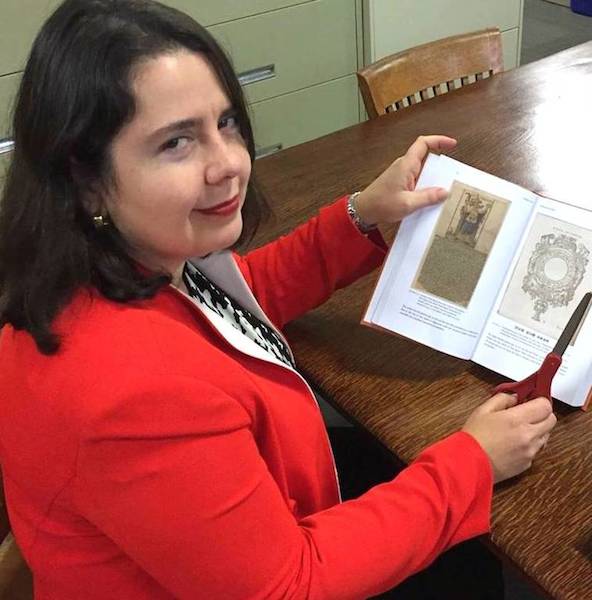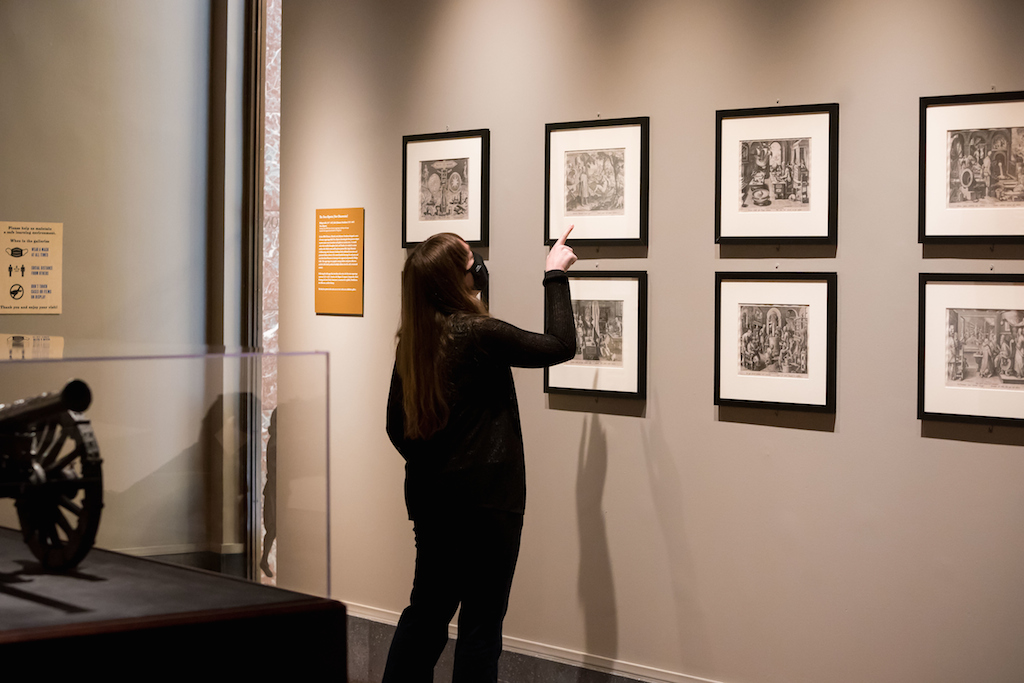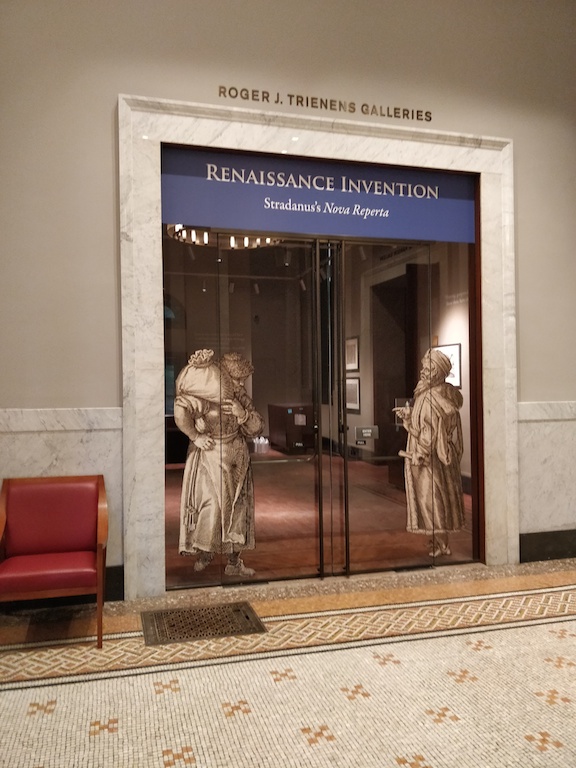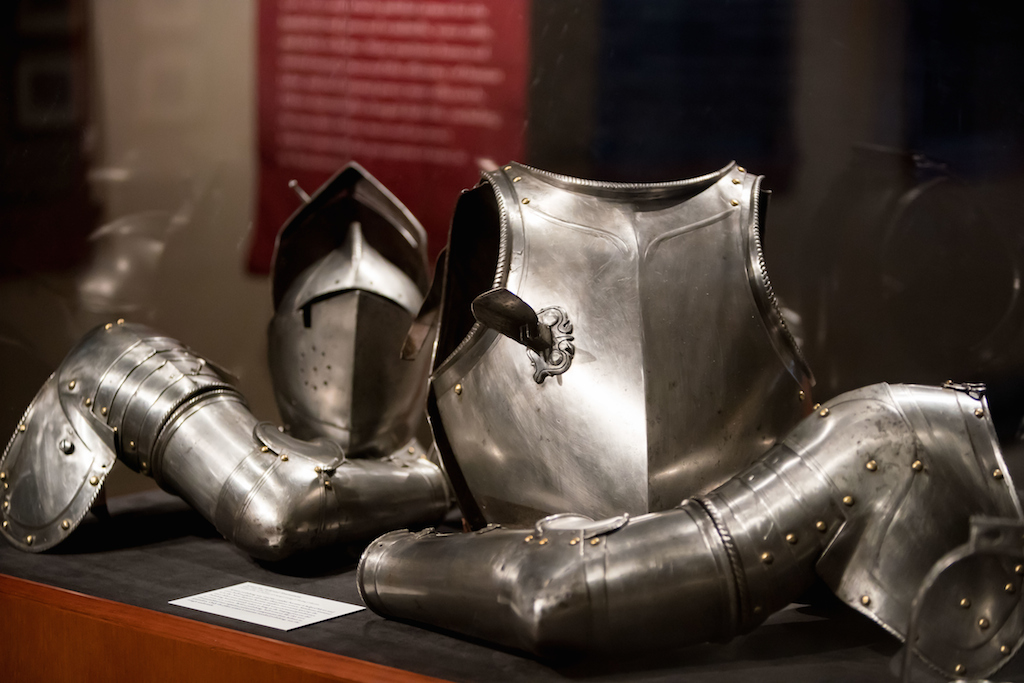
BY JUDY CARMACK BROSS
“During a time of globalization, colonization, and warfare, Europeans in the Renaissance embraced new technology even as they lamented its sometimes disruptive, destructive, and destabilizing consequences,” says Suzanne Karr Schmidt, George Amos Poole III Curator of Rare Manuscripts at the Newberry Library. “It shares a striking resemblance to our own world today, while also creating a sense of wonder.”

Suzanne Karr Schmidt assembling reproductions of Renaissance pop-ups in her 2017 book.
Karr Schmidt and the Newberry invite us to enter their time machine with Renaissance Invention, now open at the Newberry Library, following COVID-19 guidelines, through November 25. It seems just right for Chicago, a city that prides itself as a hub of invention and generous collaboration, with Karr Schmidt and fellow curator Lia Markey teaming up with the Art Institute, which has loaned rare pieces of armor, and the Adler Planetarium, which has provided astronomical instruments, for this spectacular exhibition.



“Among the Adler Planetarium’s loans for our exhibition is a heavy iron clock from Germany,” Karr Schmidt explains. “It was thought at the time to be a great improvement on the sundial. They also loaned navigation equipment, which the nobles of the time couldn’t get enough of, scientific exploration was the great thing.”
Renaissance Invention has been commended by the Sotheby’s Prize for its innovation and curatorial excellence. A former Mellon Curatorial Fellow and Assistant Curator at the Art Institute, Karr Schmidt researched printmaking for her PhD in art history, which featured another intriguing invention: the Renaissance pop-up book.
“The Nova Reperta, meaning new discoveries, a print series done by the artist Johannes Stradanus in the 1580s, celebrated the marvels of the age, including the stirrup, the cure for syphilis, and the so-called discovery of America, is the basis of the show. Designed in Florence and printed in Antwerp, the Nova Reperta’s 20 images spread far and wide, shaping Europeans’ perceptions of the innovations that were changing the world and breeding anxiety about the future,” Karr Schmidt says.
She continues, “The Renaissance was about reviving classical antiquity, but several of the inventions actually found their start in Asia, such as printing and silk production, and some from the New World, including medicine. Some of the inventions, like olive oil, actually have their roots in antiquity, but new ways to use them were found at this time. Visitors can be very close to these beautiful prints which also celebrate medical advances, including gout and syphilis, which was almost the COVID of its day.”

Karr Schmidt finds the prints devoted to silk production most fascinating. The story goes that monks from the Byzantine Empire went to Asia and stole the eggs of silkworms and brought them back. The worms were raised in Italy and a whole new industry was born. There are six prints dedicated to the production on silk on display in the exhibition. Silk production became a political import and put Italy ahead in industry.
“Engraving was the most important thing and it allowed works to go viral,” she explains. “The people of the time, including the artists and the printers, were real workhorses and engraving workshops abounded. Nothing happened in a vacuum, just like today.”


When Karr Schmidt and Markey began planning the exhibition using the Newberry’s copy of the Nova Reperta, they realized that they were missing one print from the series: “The prints were originally sold as a set, but the one showing the production of olive oil was missing. We reached out to dealers and initially found one right here in Chicago. Northwestern had a copy of the print and allowed us to borrow it for the show. But finally, we found our own replacement impression, on the art market, and that’s what is on view!” she shares.
The Arts Club and other organizations have invited Karr Schmidt and Markey to give virtual lectures, and their talks will also appear on Facebook Live. One of the most delightful website additions is the family guide which shows how new inventions, such as the clock and the windmill, solved everyday problems.
Also to enjoy at the Newberry is Decision 1920, opening September 15, about the presidential election of 1920 and the parallels between that year and our current election year.
To learn more about both exhibits, visit newberry.org.







